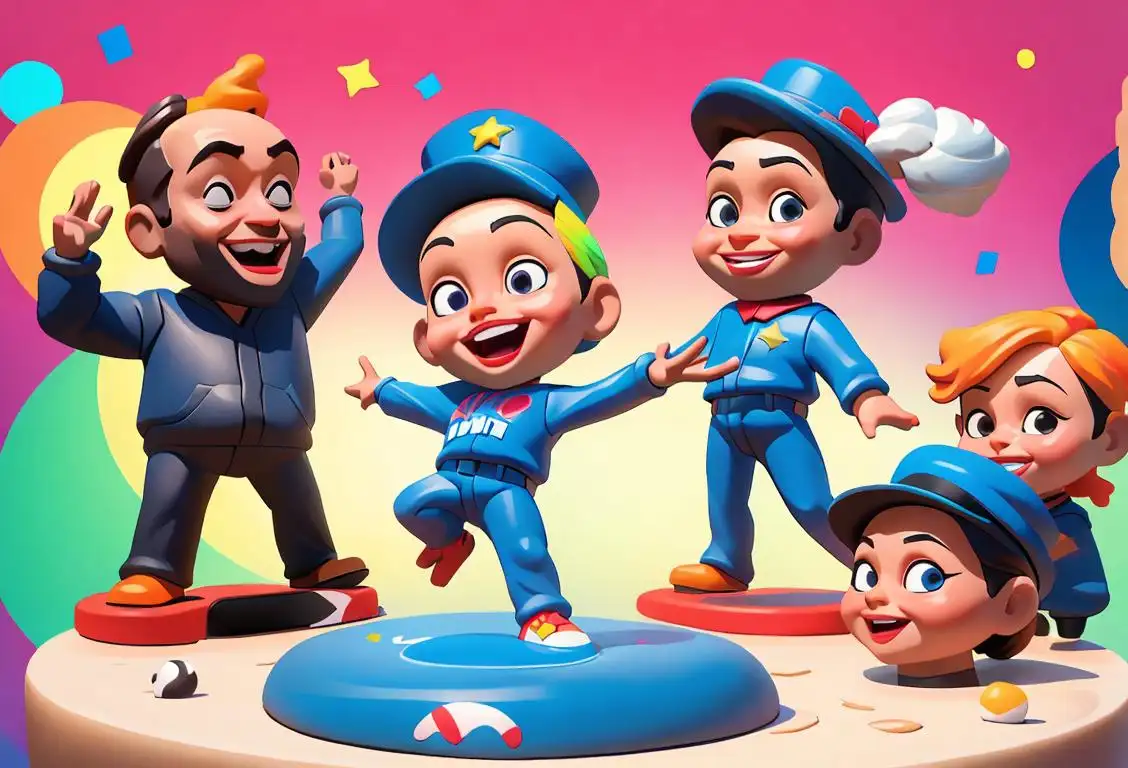National Hoodie Day

Get ready to bundle up, folks, because it's time to celebrate National Hoodie Day! At first glance, this might seem like a day dedicated purely to fashion, but believe us when we say that it's about so much more. Grab your favorite hoodie, whether it's snuggled at the back of your closet or freshly bought, and let's dive into the deep pockets, I mean significance, of this national day. Talk about being hoodwinked!
When is Hoodie Day?
It's national hoodie day on the 14th October.
The Humble Beginnings of National Hoodie Day
National Hoodie Day is not about just any normal piece of clothing -- it's a tribute to our favorite comfy wear, the camaraderie of team sweatshirts, and the strong sense of belongingness they evoke. It started with an internet trickling of 128 mentions but escalated to a full-blown trend on October 14, 2020, thus proclaiming it as National Hoodie Day.
Why a Hoodie?
Through the decades, the hoodie has become much more than just a piece of clothing. It's symbolic of comfort, team spirit, and individuality. The humble hoodie can take us from a chilly morning jog to a relaxed evening with friends and maintains a sense of style while doing so! So, recognizing this versatile piece of clothing with its own day seems perfectly reasonable, don't you think?
How to Celebrate National Hoodie Day
Celebrating National Hoodie Day can be as individual as the hoodie you wear! A simple way is to wear your favorite hoodie and share a selfie on social media, with the hashtag #NationalHoodieDay. Or better yet, organize a group of friends for a hoodie-themed gathering where everyone wears their most unique or favorite hoodie. Also, you could take it as an opportunity to donate warm clothing to those in need.
Hoodie Day's Impact
National Hoodie Day can be an excellent opportunity to show solidarity with social issues or simply raise awareness on the importance of comfortable and inclusive fashion. The day is meant for everyone, as hoodies don't discriminate - they are all about comfort, warmth, and style.
History behind the term 'Hoodie'
1930
Introduction of the hooded sweatshirt
In the year 1930, the first hooded sweatshirt, which would later be known as a 'hoodie', was introduced. Originally designed as a practical garment for athletes to keep warm during training sessions, the hoodie featured a hood that could be pulled over the head to protect against the elements.
1970
Rise of the hoodie as a fashion statement
By the 1970s, the hoodie started gaining popularity beyond the realm of sports. It became associated with the counterculture movement and was adopted by various subcultures, including skaters and surfers. The hoodie's casual and rebellious image made it an icon of street fashion and youth culture.
1990
Hoodies in hip-hop culture
In the 1990s, hoodies became deeply intertwined with hip-hop culture. Rappers and artists often sported hoodies as part of their fashion style, further solidifying its status as a symbol of urban streetwear. The garment became a way to express identity, individuality, and affiliation with a particular music genre.
2000
Negative stereotypes surrounding hoodies
The hoodie faced backlash in the early 2000s when it became associated with criminal behavior in some media portrayals. The negative perception of hoodies as attire for criminals led to controversies and instances of profiling individuals based solely on their choice of clothing. This sparked debates on issues of prejudice and discrimination.
2012
Hoodie as a symbol of activism
The tragic shooting of Trayvon Martin in 2012 brought the hoodie into the spotlight once again. Martin, wearing a hoodie at the time, became a symbol of racial profiling and sparked nationwide protests. The incident propelled the hoodie into becoming an emblem of social justice activism, representing a call for equality and an end to racial stereotypes.
Present
Versatile hoodie in contemporary fashion
Today, the hoodie has cemented its place in contemporary fashion. It has transcended social and cultural boundaries, embracing various styles and designs. From high-end fashion runways to everyday streetwear, the hoodie remains a versatile and comfortable garment, loved by people of all ages and backgrounds.
Did you know?
Did you know that the hoodie was first mass-produced in the 1930s? It was designed for laborers in the New York freezing warehouses!Tagged
awareness fun loved ones sports fashionFirst identified
6th July 2015Most mentioned on
14th October 2020Total mentions
128Other days
Hoodie Day
Take A Hike Day
Memorial Day
Happiness Day
Cancer Survivors Day
Drink A Beer Day
Trivia Day
Foundation Day
Bobblehead Day
Suicide Prevention Month Day








